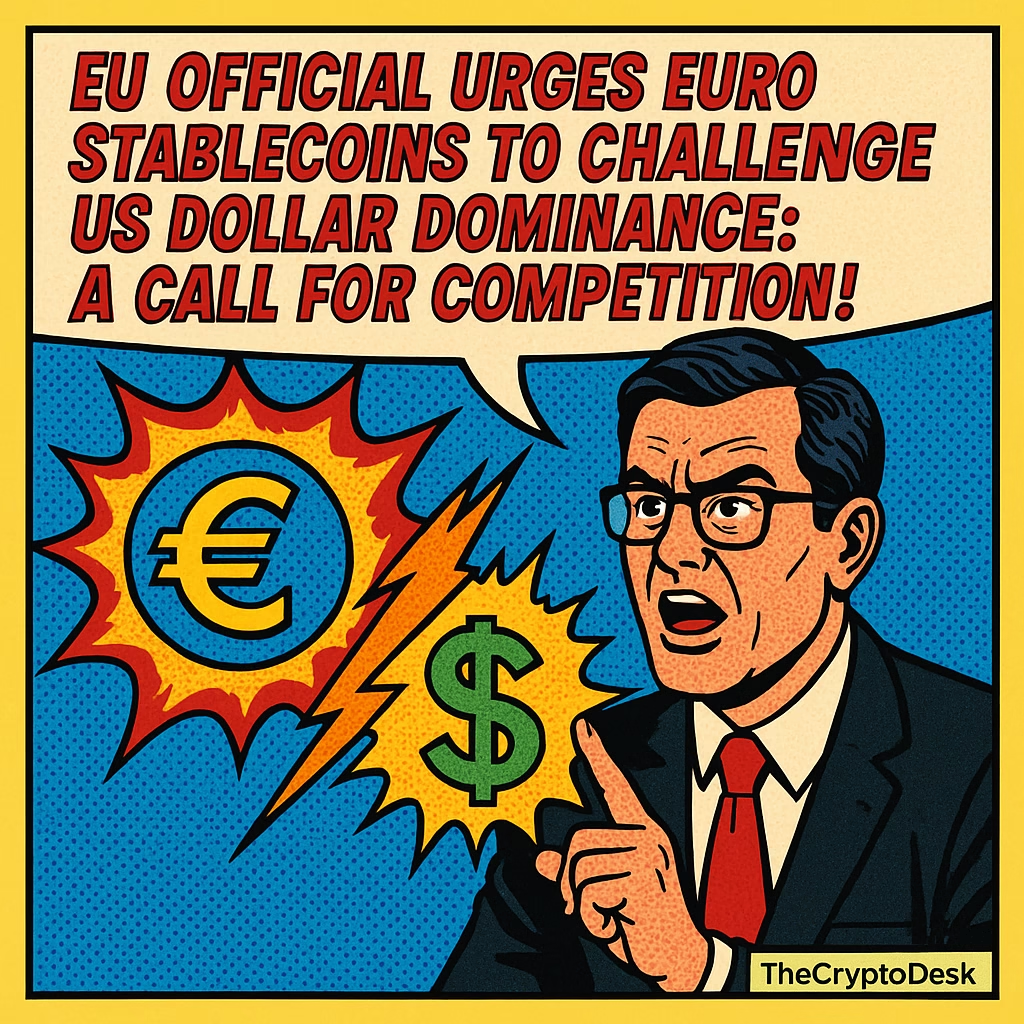In a bold move that could significantly reshape the landscape of the cryptocurrency market, a high-ranking European Union official has emphasized the urgent need for euro-backed stablecoins. Pierre Gramegna, the managing director of the European Stability Mechanism (ESM), voiced his concerns during a recent hearing focused on the eurozone’s economic outlook. He drew attention to the prevailing dominance of U.S. dollar-pegged stablecoins, urging Europe to pave the way for its own digital currency initiatives to bolster financial sovereignty.
“Europe must not remain tethered to U.S. dollar-denominated stablecoins, which currently overshadow our markets,” Gramegna stated passionately. He underscored that the emergence of stablecoins is a critical element in the evolving financial ecosystem and stressed that Europe should actively support the creation of euro-denominated stablecoins by local issuers.
The urgency of Gramegna’s remarks cannot be overstated. His call comes at a time when the U.S. is making significant strides in the digital currency domain, particularly following the rollout of the GENIUS regulatory framework this year. This initiative has helped accelerate the growth of dollar-backed stablecoins like USDC and USDT, leading to mounting concerns among European officials about the implications for their own financial systems and payment infrastructures.
In a show of solidarity with Gramegna’s vision, Paschal Donohoe, president of the Eurogroup, chimed in on the discussion of financial innovation. He highlighted the potential of the European Central Bank’s (ECB) digital euro project, suggesting that it could serve as a catalyst for modernizing the region’s payment systems. “A digital euro could be a significant boost for commerce across Europe,” Donohoe noted, reinforcing the need for the EU to maneuver strategically amidst growing competition.
It’s clear that momentum is gathering around the digital euro initiative. According to ECB Executive Board member Piero Cipollone, there are serious discussions underway regarding the potential launch of a digital euro by 2029. “We have reached a substantial consensus among euro area finance leaders concerning customer holding limits aimed at protecting bank deposits,” he elaborated, describing recent negotiations as a substantial breakthrough.
🏛️ A digital euro could launch in 2029, says ECB board member Piero Cipollone, citing growing momentum and progress in member-state talks. #digitaleuro #ECB
Cipollone revealed that by early May next year, the European Parliament is expected to make significant progress in establishing a legislative framework for the digital euro, with a comprehensive report set to be released in October. As European states continue to refine their positions, a general consensus is anticipated by year-end.
The digital euro isn’t just about retaining European spending power; it’s also a strategic measure to curtail reliance on private payment giants like Visa and PayPal. Moreover, it aims to diminish the overwhelming influence of dollar-pegged stablecoins in the European market, yet key technical and policy challenges are still on the table. Questions surrounding user privacy, the coexistence of banks with new technologies, and the choice of blockchain infrastructure (such as Ethereum or Solana) remain pivotal to the project’s execution.
💶 European officials are fast-tracking the digital euro, weighing Ethereum or Solana, as pressure mounts to keep pace with US progress in digital currencies. #DigitalEuro #ethereum #Solana
Supporters of euro-backed stablecoins and the digital euro argue that these initiatives could significantly enhance Europe’s competitiveness on the global financial stage. However, skeptics warn that any delays in regulatory frameworks might leave the EU trailing in the digital payment race dictated largely by U.S. standards.
The urgency of developing euro-backed stablecoins is reflected in the growing collaboration among European policymakers and financial institutions. In July, ECB adviser Jürgen Schaaf called for heightened global coordination on stablecoin regulations, cautioning that discrepancies in regulatory frameworks between the U.S. and EU could jeopardize Europe’s monetary sovereignty.
🇪🇺 ECB advisor warns Europe risks losing monetary sovereignty as euro-denominated stablecoins capture just 0.15% of $230 billion global stablecoin market. #Europe #Stablecoin
On the ECB’s official website, Schaaf advocated for “well-regulated euro-denominated stablecoins,” stressing that such initiatives could reinforce Europe’s monetary authority if properly safeguarded. He acknowledged the alignment of the U.S. GENIUS Act with the EU’s Markets in Crypto-Assets (MiCA) framework but pointed out its more lenient aspects. Consistent global standards are seen as vital to prevent market fragmentation.
Previous concerns echoed by Bank of Italy Governor Fabio Panetta highlight the slow adoption of euro stablecoins despite the rollout of MiCA. He suggested that the digital euro could bridge this adoption gap, while Schaaf emphasized that private innovations and distributed ledger technology (DLT) must work hand-in-hand with public sector efforts to realize these ambitions.
As part of this concerted push, nine of Europe’s leading banks—including ING, UniCredit, CaixaBank, and Danske Bank—are gearing up to launch a euro-backed stablecoin by 2026, aiming to obtain licensing under MiCA. This collaboration promises faster, more cost-effective, and round-the-clock cross-border transactions.
🇪🇺 Nine European banks will launch a MiCA-regulated, euro-backed stablecoin that will contribute to Europe’s strategic autonomy in payments. #EURStablecoin #MiCARegulation
This initiative underlines Europe’s strong resolve to reduce its reliance on U.S. stablecoins, which currently command around 99% of the global supply. Statistics from the ECB reveal that euro-pegged tokens still linger below €350 million in circulation—a gap that European regulators and banks are determined to close.
As Europe forges ahead, the stakes have never been higher. The landscape of digital currencies is evolving rapidly, and the outcome of these efforts will be pivotal in determining not just the future of euro-backed stablecoins, but also the euro’s standing on the world stage. Are we on the brink of a new era of financial autonomy for Europe? Only time will tell.
Stay informed about the latest developments in cryptocurrency and the digital financial landscape by visiting [CoinDesk](https://www.coindesk.com/) or [CoinTelegraph](https://cointelegraph.com/).
